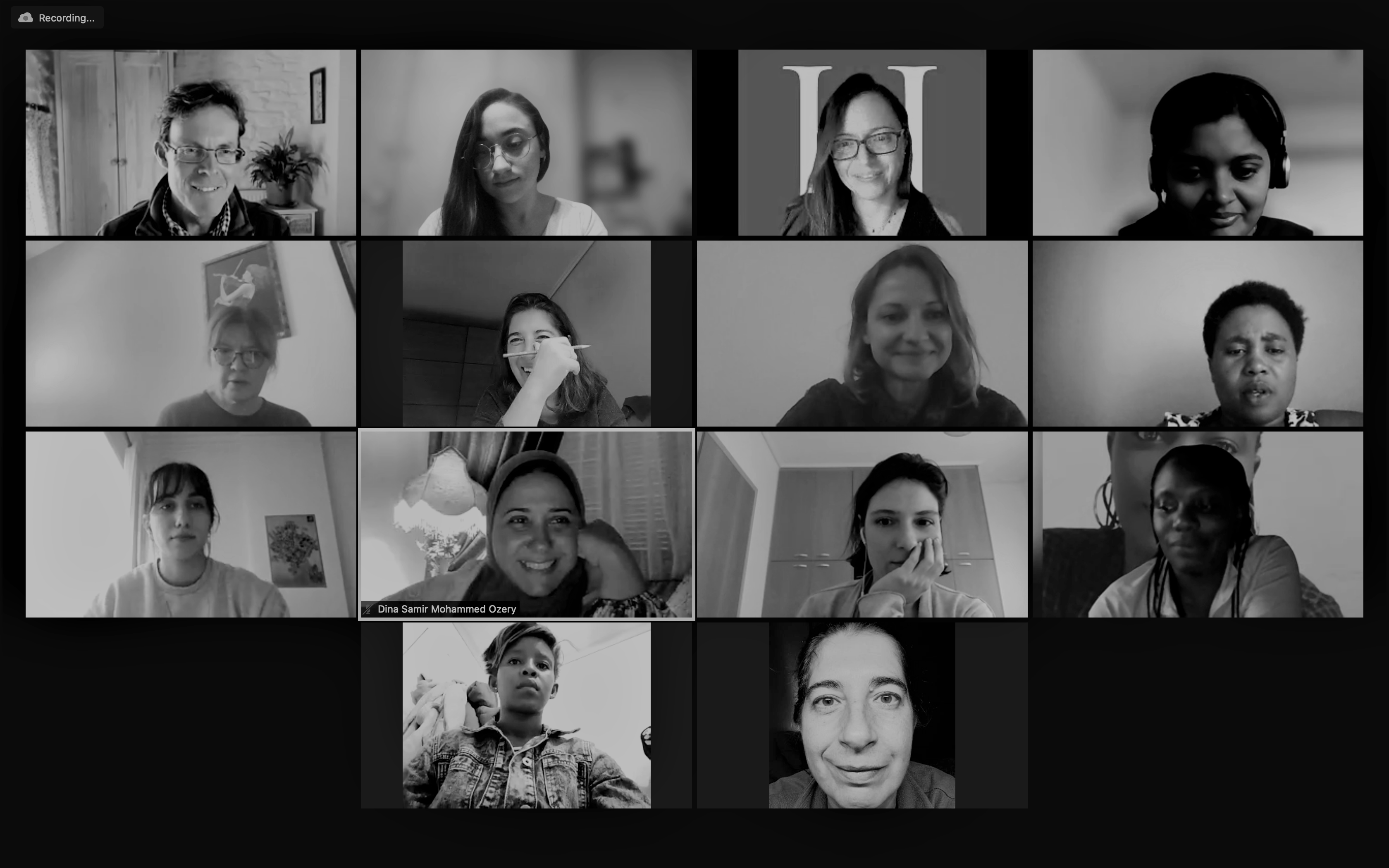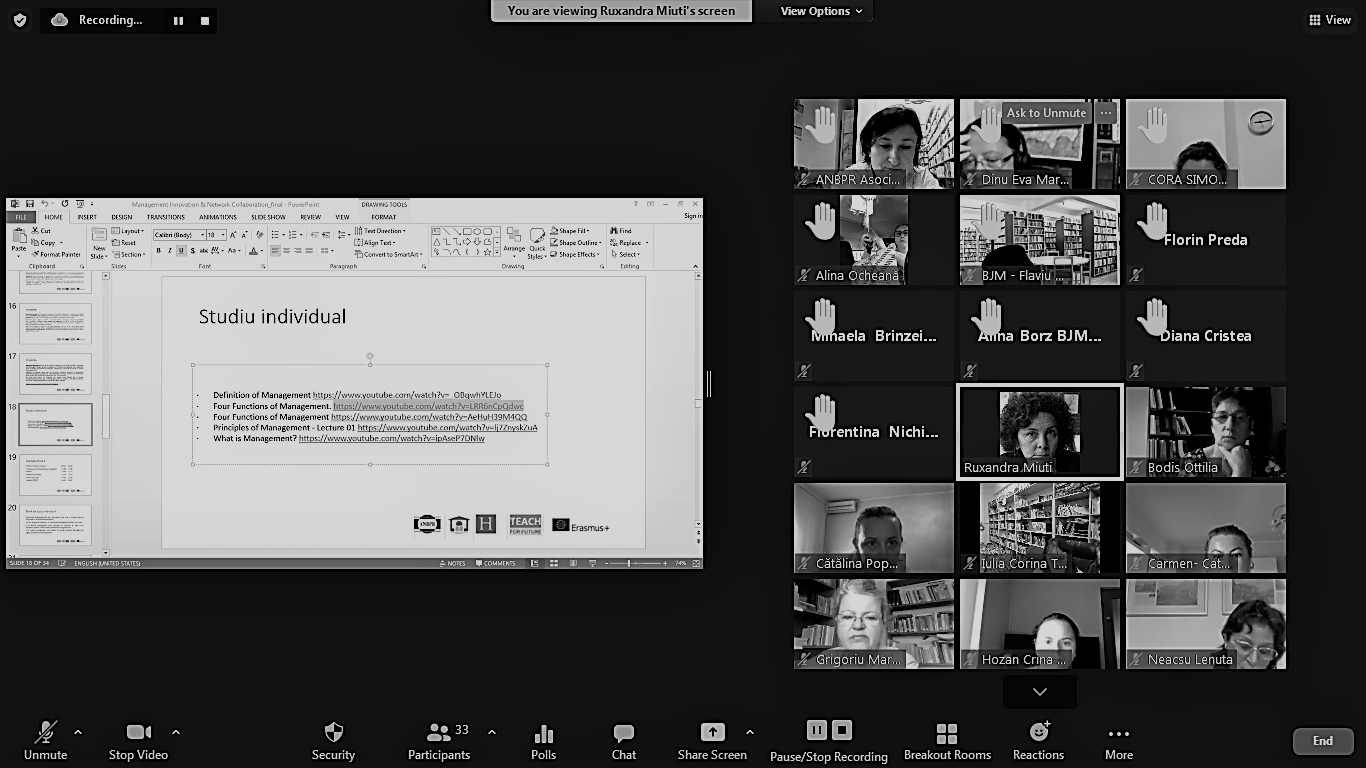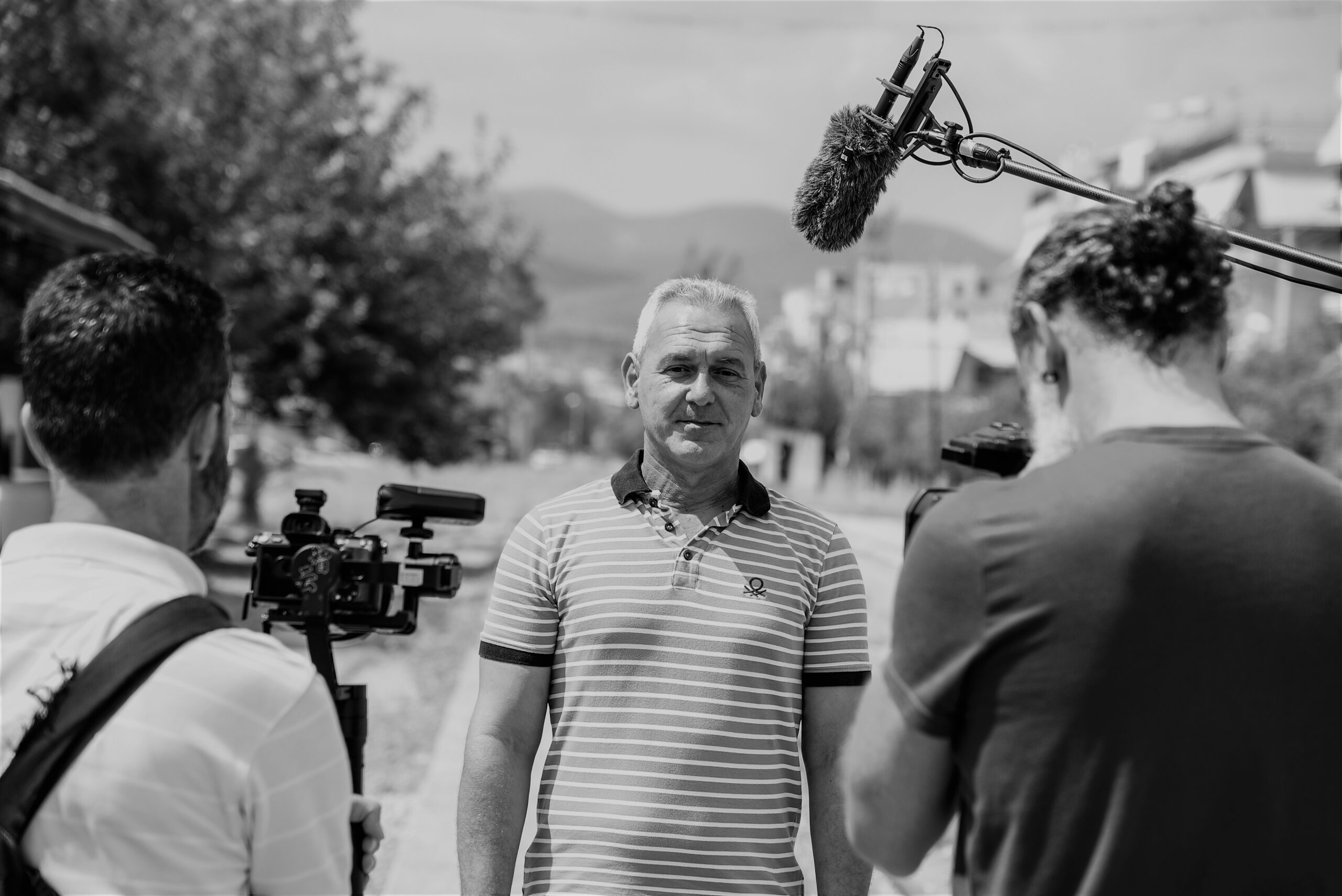: Uncategorized
“Engaging Communities” Workshop
The online 3-day workshop on “ Engaging Communities” took place from 5 to 7 November 2021.
22 heritage managers from Africa (Ethiopia, Ghana, Gambia, Egypt, Tanzania, Rwanda, Kenya, Morocco and Namibia) have received training on how to engage communities through heritage and for the benefit of heritage. This workshop have been supported by the UN Economic Commission for Africa, the African Union and the Heritage Management Organization as part of the “AU Year of Arts Culture and Heritage”.
During the course, participants familiarized themselves with the context of community engagement through heritage, discussed methodologies based on ethnography and oral history, and engaged in practical, both individual and group, exercises. By using the techniques demonstrated by the workshop’s instructors and getting involved with all exercises, participants can now understand better the communities that they might work with, and have acquired the knowledge on how to successfully engage communities.
The course’s instructors:
Dr Evangelos Kyriakidis: is the founding Director of the Heritage Management Organization. He has research interests in Mycenaean administration, Minoan religion and iconography as well as in ritual theory, history of archaeological thought and archaeological site management and planning.
Dr Aris Anagnostopoulos: is the Public Director of the Heritage Management Organization. His research interests focus on the politics and poetics of the material aspects of the past in the present.
Dr Lena Stefanou: is an archaeologist and specializes in museum and heritage studies. She works at the Hellenic Open University and is also the Public Officer of the Heritage Management Organization. Her research interests are the ideological uses of the past in the present.
Interpretive Writing for Natural and Cultural Heritage
The online 3-day workshop on “ Interpretive Writing for Natural and Cultural Heritage” took place from 22 to 24 October 2021.
9 heritage managers from Africa (South Africa, Rwanda and Egypt), Asia (Turkey, India) and Europe (Greece) have been trained on writing an effective word-based Heritage Interpretation text that grabs and holds the reader’s attention.
During the course the participants took part in many activities, such as preparing an original interpretive text and writing a graphic panel, visiting a cultural site to see how it is interpreted, creating a new graphic panel for it and writing a creative interpretive text for the selected heritage element based on Elefsina. Using the techniques demonstrated by the workshop instructor and by participating in all the individual and group activities, participants can now successfully engage in interpretive writing about natural and cultural heritage.
The course’s instructor, Steven Richards-Price, is a heritage interpreter with many years of practical experience working for natural resources agencies in Wales, UK. In his part-time role with Natural Resources Wales as Visitor Experience Specialist Advisor, he connects people with state-owned forests and National Nature Reserves.
The Heritage Management Organization joins forces with the UN Economic Commission for Africa and the African Union
The Heritage Management Organization joins forces with the Economic Commission for Africa and the African Union to promote capacity building in Heritage Management Institutions across Africa
We are honored to announce that the Heritage Management Organization, the Economic Commission for Africa (UNECA), and the African Union (AU) are partnering in celebration of the African Union Year of Arts, Culture, and Heritage (2021).
Aiming to build capacity in Heritage Management Institutions around Africa, we are launching a comprehensive scholarships program, which acknowledges the significance of heritage in the African continent as a lever for education, local pride, and sustainable economic development.
This is the first time that the UN Economic Commission for Africa partners with another institution to launch a cultural heritage program in Africa . In this first- ever partnership our role is to deliver capacity-building programs (mapping capacity, organizing workshops, and giving out scholarships) to Ethiopia, Benin, and The Gambia and to offer consultancy services in all 5 projects that the UN ECA is running in Africa.
In the context of the program, the Heritage Management Organization is offering 30 scholarships, for Heritage Management Capacity Building to train heritage experts, working for African heritage organizations. The scholarships will be granted for the period 2021-2022 as follows:
- Interpretive Writing for Natural and Cultural heritage, 22-24 October 2021
- Engaging Communities in Cultural Heritage 5-7 November 2021
- Project Management for Heritage Managers, 3-5 December 2021
- Introduction to Heritage Interpretation for Site Managers, 21-23 January 2022
- Successful Fundraising for Heritage Managers: Strategies and Best Practices, 11-13 March 2022
- Communication Strategy and Strategic Marketing for Cultural Organizations, April 2022
- Strategic Planning for Heritage Managers, 13-15 May 2022
- Digital Tools for Cultural Heritage Management Summer School, 16 May-10 June 2022
- Travelling Exhibitions, June 2022
- Engaging Communities in Cultural Heritage Summer School Programme, 19 June-1 July 2022
We are delighted to have been given the opportunity to collaborate both with the Economic Commission for Africa and the African Union in heritage-related management programs highlighting our conviction that heritage management can be a significant stepping stone towards creating jobs, supporting sustainable development as well as strengthening democracy. Heritage is a major tool for Socio Economic development.
TEACH FOR FUTURE: Local training activities dedicated to adult beneficiaries in Romania
TEACH FOR FUTURE: Local training activities dedicated to adult beneficiaries in Romania in the field of ICT, Management of Innovation & Network Collaboration and Leadership & Entrepreneurship
The transnational project “TEACH FOR FUTURE – Educational Transformation of Adults through Innovation, Technology and Entrepreneurship” (“TEACH FOR FUTURE”), funded under the European Union’s Erasmus+ program, Key Action 2, Strategic Partnerships, has recently entered a new stage of implementation.
After the successful completion of the train-the-trainers sessions for the 10 facilitators from Romania, Bulgaria and Greece this spring, the TEACH FOR FUTURE project continued with the training activities for the adult beneficiaries from the three countries participating in the consortium.
Between June 25, 2021 (the date of completion of the public selection of participants) and until September 9, 2021, the National Association of Librarians and Public Libraries of Romania (ANBPR), as consortium leader, coordinated the organization of training sessions in Romania . The 78 adult participants, recruited by public call, were the beneficiaries of intensive sessions on current issues in the fields of Information & Communication Technology, Innovation Management & Network Collaboration and Entrepreneurship & Leadership.
The management of the training activities involved the organization of a public call for selection at national level, informing the selected participants about the content of the teaching curriculum, planning the topics, purchasing ECDL certification services and products, enrolling the 78 students in Romania in training programs the 3 topics, the support of ICDL simulations and tests on the 4 IT skills by adults in Romania, the evaluation of participants in the fields of Innovation Management & Network Collaboration and Entrepreneurship & Leadership.
Successful completion of the certification program will end with the issuance of TEACH FOR FUTURE participation certificates, but also ICDL certificates for promoted participants. At the end, ANBPR will announce the organization of a competition of creative ideas on the applicability of the knowledge acquired in the real work environment, and the best ideas will be selected on the basis of a vote.
“I was pleasantly surprised to find that, even at the age of 54, you can still accumulate quality information, in an era in which information is intensely circulated. The Innovation Management course gave me a new perspective from which I can look at opportunities, it changed my false impression that time is never on my side, it taught me how not to give up on dreams even if everything seems to collapse around you. The exchange of experience with the 77 students from different institutions, from different professions (librarians, teachers, computer scientists) was a confirmation of the possibility of unity in diversity. The courage to talk about the difficulties encountered by various institutions during the pandemic as well as the innovative methods applied convinced me once again that the possibilities are varied if we know how to create constructive dialogues. At the same time, budgetary constraints have led to rethinking, reorganizing and, ultimately, optimizing existing services. I was also impressed by the interest and respect that the course moderators showed not only to our profession, but also to the person behind the profession. I consider it a personal success to go through this course through the information received, the people I met and the well-being that it imprinted on me during the 7 days. For all this, I thank Mrs. Ioana Crihană, the moderators, Mrs. Marilena Chiriță and Elena Oncia. Even if the difficulties encountered in the implementation of the project were enough, we hope that the satisfaction left in the souls of the participants will compensate in a positive way and leave room for other equally valuable projects.
The Teach for Future leadership course was a pleasant and welcome surprise. I had the opportunity to become aware of language mistakes in communicating with other people, to recognize postures in body language that discredited me in front of an interviewer or an authority, and, most importantly, to correct them patiently. The exercises done in groups developed my ability to control myself in concrete situations and to test my qualities as a possible leader. All the information related to entrepreneurship, the way you can impose yourself without forcing, through professionalism and honesty, was more than useful. I thank Mrs. Margareta Tătăruș, Ruxandra Miuți and Alice Roman for the close and full of understanding in which they introduced us to the courses taught.”
Lenuța Neacșu, TEACH FOR FUTURE Participant
County Library “C. Sturdza ”Bacău
“Thank you very much for the chance to participate in these courses, which are especially useful, interesting, and passionate, determined and open lecturers to show us new things. I can’t help but tell you that I was pleasantly surprised and impressed by the quality of the participants / colleagues, who conquered me every day. A few people in the group will stay in my mind for a long time (even if I didn’t meet them live) and will inspire me in terms of their emotion, their determination and their skill to want beautiful things to happen. With the greatest sincerity and joy: Congratulations and a big THANK YOU for this opportunity.”
Iulia-Valentina Stănescu, TEACH FOR FUTURE Participant
“Regarding the digital marketing sessions and online collaboration tools, I would like to congratulate the readers for the attractive format of the presentations, as well as for the very close collaboration with the participants. I admit, most of these notions were already familiar to me (especially because I have the advantage of being part of the generation of so-called “digital natives”), but it was a pleasure to be with all participants in such a framework. relaxed and cheerful. The image editing course was again a great occasion for joy, especially because I always wanted to deepen my editing tools, but time always put me in trouble. Even though this session lasted only three days, I can say that the facilitator managed to condense the information and help us to acquire the fundamental skills for mastering one of the oldest and most used editing tools, GIMP.”
Vlad Ababei, TEACH FOR FUTURE Participant
The “TEACH FOR FUTURE” project is an educational premiere both in terms of the mix of adult education skills and in terms of collaborative, transnational and multisectoral approach to the teaching-learning process. Through local training activities for adults, TEACH FOR FUTURE facilitators in Romania transferred a series of specialized knowledge from 3 thematic areas to 78 adult learners, which thus improved their personal and professional development chances, in accordance with current labour market requirements.
About ANBPR: The most representative professional association of librarians and public libraries in Romania, concerned with the well-being and professional performance of its members, the evolution of the national cultural field and the substantial emancipation of communities. Starting from the basic principles of associative work – solidarity, cohesion, social employment and competitiveness – ANBPR advocates for supporting quality education, democratizing access to innovation and awareness on the benefits of technology for heterogeneous categories of library service users.
Contact information: email: [email protected]; mobile: 0758 220 291; website: www.anbpr.org.ro; www.teachforfuture.ro
The cultural associations of Elefsina design a cultural path: participatory planning from theory to practice
On Saturday, September 4, during our workshop for the participatory design of cultural walks in partnership with 2023 Eleusis European Capital of Culture, we strolled around the city of Elefsina with representatives of the “Union of the Cretans of Elefsina Megalonissos” and the “Association of Symian of Elefsina Michael Archangelos”. We visited places that encapsulate memories, experiences and narratives of internal migration to Elefsina the city, and at each spot the representatives of the cultural associations shared their evocative stories in front of the camera.
On Sunday, September 5, we followed the representatives of the “Association of Asia Minor in Elefsina”, the “Association of Chians of Elefsina, Agia Markella” and the “Association of Epirus of the Thriasio Pedio”, as they tracked the paths of their ancestors in the city of Elefsina. Personal and collective stories became entangled in their narratives, as part of our educational workshop on the participatory design of cultural walks.
«Οι σύλλογοι της Ελευσίνας σχεδιάζουν μία πολιτιστική διαδρομή: συμμετοχικός σχεδιασμός από την θεωρία στην πράξη»
Το Σάββατο 4 Σεπτέμβρη, στo πλαίσιo του εκπαιδευτικού εργαστηρίου μας για τον συμμετοχικό σχεδιασμό πολιτιστικών διαδρομών, σε συνεργασία με την Ελευσίνα 2023 Πολιτιστική Πρωτεύουσα της Ευρώπης, περπατήσαμε με εκπροσώπους της “Ένωσης Κρητών Ελευσίνας Η Μεγαλόνησος” και του “Συλλόγου Συμιακών Ελευσίνας Ο Μιχαήλ Αρχάγγελος” σε σημεία μέσα στην πόλη που συμπυκνώνουν μνήμες, εμπειρίες και αφηγήσεις της εσωτερικής μετανάστευσης προς την Ελευσίνα, στα οποία οι εκπρόσωποι των συλλόγων μοιράστηκαν με κέφι και δημιουργικότητα προσωπικές και συλλογικές ιστορίες.
Την Κυριακή 5 Σεπτέμβρη ακολουθήσαμε τους εκπροσώπους του “Συλλόγου Μικρασιατών Ελευσίνας”, της “Χιακής Ένωσης Αγία Μαρκέλα” και του “Συλλόγου Ηπειρωτών Θριασίου Πεδίου”, καθώς ανίχνευαν τις διαδρομές των προγόνων τους στην πόλη της Ελευσίνας. Οι προσωπικές και οι συλλογικές ιστορίες μπλέχτηκαν στις αφηγήσεις τους, στα πλαίσια του εκπαιδευτικού εργαστηρίου μας για τον συμμετοχικό σχεδιασμό πολιτιστικών διαδρομών.
OPEN CALL | TEACH FOR FUTURE
ΠΑΡΑΤΑΣΗ ΥΠΟΒΟΛΗΣ ΑΙΤΗΣΕΩΝ ΕΩΣ 27 ΣΕΠΤΕΜΒΡΙΟΥ
TEACH FOR FUTURE: Πρόσκληση για επιλογή 70 ενηλίκων δικαιούχων για δωρεάν εκπαιδευτική επιμόρφωση στους τομείς της Πληροφορικής και της Τεχνολογίας της Πληροφορίας, της Διαχείρισης Καινοτομίας και Δικτύωσης, και της Επιχειρηματικότητας και Ηγεσίας.
Αναζητούμε 70 τουλάχιστον ενήλικες, σε εθνικό επίπεδο, προκειμένου να συμμετάσχουν ως δικαιούχοι ΔΩΡΕΑΝ εκπαιδευτικών σεμιναρίων στον τομέα της Πληροφορικής και της Τεχνολογίας της Πληροφορίας (56 ώρες), στον τομέα της Διαχείρισης Καινοτομίας και Δικτύωσης (35 ώρες) και στον τομέα της Επιχειρηματικότητας και Ηγεσίας (35 ώρες)
Που: στην Θεσσαλονίκη
Πως: η εκπαίδευση θα πραγματοποιηθεί διαδικτυακά
Πότε: Από 15/10/21 έως 28/02/22, σε διαφορετικές ομάδες, ώρες και ημέρες που θα εξυπηρετούν τους συμμετέχοντες.
Οργάνωση: «Πρωτοβουλία για την Ανάδειξη της Πολιτιστικής Κληρονομιάς» (HERITAGE)
**Θα δοθεί βεβαίωση συμμετοχής**
Ταξίδι εκπαίδευσης στη Ρουμανία και τη Βουλγαρία:
— Οι κορυφαίοι 10 συμμετέχοντες στην ενότητα Πληροφορική και Τεχνολογία της Πληροφορίας θα επισκεφτούν το Κέντρο Αριστείας της Εθνικής Βιβλιοθήκης της Ρουμανίας στο Βουκουρέστι.
— Οι κορυφαίοι 10 συμμετέχοντες στον τομέα της Επιχειρηματικότητας και Ηγεσίας θα επισκεφτούν το Κέντρο Αριστείας στο Βιντίν της Βουλγαρίας.
— Οι κορυφαίοι 10 συμμετέχοντες στον τομέα της Διαχείρισης Καινοτομίας και Δικτύωσης θα συμμετάσχουν σε εκπαίδευση στο Κέντρο Αριστείας στην Θεσσαλονίκη.
*Τα έξοδα μετακίνησης, διαμονής, και το φαγητό στα κέντρα αριστείας στη Ρουμανία και τη Βουλγαρία είναι δωρεάν φτάνει να είστε στους 10 κορυφαίους της κάθε θεματικής εκπαιδευτικής ενότητας. Η διάρκεια των ταξιδιών στην Ρουμανία και τη Βουλγαρία είναι διάρκειας 7 ημερών αντίστοιχα.
Πως να κάνετε αίτηση: ακολούθησε τον σύνδεσμο: https://forms.gle/Kwnwxa5g1bDCEG8D8
Για τυχόν ερωτήσεις ή διευκρινίσεις στείλε email [email protected]
DEADLINE EXTENDED TO SEPTEMBER 27
TEACH FOR FUTURE: The Heritage Management Organization is inviting 70 adult beneficiaries for free training in the fields of IT, Management of Innovation & Network Collaboration and Entrepreneurship & Leadership.
We are looking for at least 70 adults, nationally, in order to participate as beneficiaries of FREE training seminars in the field of IT (56 hours), Management of Innovation & Network Collaboration (35 hours) and Entrepreneurship and Leadership ( 35 hours).
Where: in Thessaloniki
How: the training will be conducted online
When: From 15/10/21 to 28/02/22, in different groups, hours and days that will serve the participants.
Organization: “Initiative for the Promotion of Cultural Heritage” (HERITAGE)
** Certificate of participation will be given **
Study trip to Romania and Bulgaria:
– The top 10 participants in the IT section will visit the Center of Excellence of the National Library of Romania in Bucharest.
– The top 10 participants in the field of Entrepreneurship and Leadership will visit the Center of Excellence in Vidin, Bulgaria.
– The top 10 participants in the field of Management of Innovation & Network Collaboration will participate in training at the Center of Excellence in Thessaloniki.
* Travel, accommodation, and food in the centers of excellence in Romania and Bulgaria are free, as long as you are in the top 10 of each thematic educational unit. The duration of the trips to Romania and Bulgaria is 7 days respectively.
📌Apply here by September 20.
For any questions or clarifications send an email to [email protected]






